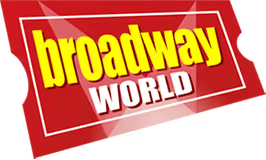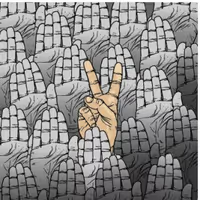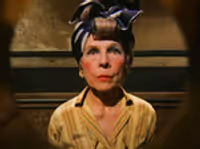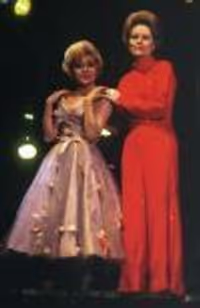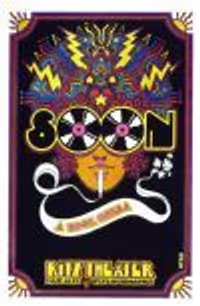My rant on the original OKLAHOMA OBCR
PUPPETMAN
Understudy Joined: 12/28/07
#25re: My rant on the original OKLAHOMA OBCR
Posted: 2/19/08 at 6:53pmThen why don't you write a book and clear it all up.
#26re: My rant on the original OKLAHOMA OBCR
Posted: 2/19/08 at 6:55pm
Seriously, I can't believe we're arguing this.
Go to Castalbumdb and you'll find tons of cast recordings.
I've ready almost every Musical Theatre book out theare and have never read this statement before.
#27re: My rant on the original OKLAHOMA OBCR
Posted: 2/19/08 at 7:08pm
For what it's worth here's what Wikipedia says on the subject of first cast recording:
History
The British were the first to make cast recordings, and they were also the first to make original London cast recordings of shows that had already opened on Broadway, but had not been recorded with their original Broadway cast. This led to the odd situation of having, for example, a 1928 recording of the London cast of Show Boat, but no recording with the actual 1927 Broadway cast, and a recording of the London cast of Sigmund Romberg's The Desert Song, but not of the 1926 Broadway cast - even though both of these shows are Broadway musicals, rather than British ones.
Prior to the development of original cast recordings, there had of course been recordings of songs from musicals, and collections of several such songs, and recordings of songs performed by cast members; but they were recordings of songs, not recordings of a musical. For example, Danny Kaye made a set of recordings of songs from Lady in the Dark. Even though Danny Kaye was a member of the cast, this was certainly not an original cast recording not merely because the arrangements and presentation were different, but because in this recording, Danny Kaye performed Gertrude Lawrence's songs! (Gertrude Lawrence did record her songs for RCA Victor.)
The first American original cast recording as we know it was an early experimental LP of program transcription of selections from The Band Wagon, a 1931 revue starring Fred and Adele Astaire.
The following year, Jack Kapp produced an album of songs from Show Boat timed to the 1932 Ziegfeld revival. This album featured Helen Morgan and Paul Robeson doing their songs from the show but used studio cast singers for the leads.
As the 1930s progressed, Liberty Music Shop in New York City made mini albums of songs from the Ethel Merman musical comedies Red Hot and Blue and Stars in Your Eyes. These were more like personality recordings, since the arrangements were not the ones heard in the theatre.
The first complete original cast albums was Marc Blitzstein's 1938 recordings of songs from The Cradle Will Rock although these were recorded with just piano accompaniment and not the show's orchestra. In 1984, the original recordings from Very Warm for May (1939) were discovered and issued on an LP.
RCA Victor had made an album of the key songs from Porgy and Bess using the theatre orchestra but featuring Met opera singers Lawrence Tibbett and Helen Jepson singing the songs. Decca riposted with another album of the same highlights sung by the actual stars of the original production, although recorded five years after the premiere. When a revival was staged in 1942, Decca issued a second album of some of the secondary songs from the opera by the revival cast and later combined these two albums onto one LP and called it the "original cast recording". Decca also issued an album of songs from the all-soldier revue This Is the Army by Irving Berlin.
Finally in 1943, came Decca's recording of Oklahoma!. The show was the biggest hit Broadway had experienced up until that time and people who could not get tickets bought the album. It would eventually sell over 1 million copies as a set of 78-rpm records, and millions more on LP and Compact Discs.
Decca soon began recording every hit musical that came along including Carmen Jones, Carousel, and Annie Get Your Gun. Soon, all the other record companies were bidding for the rights to record Broadway shows with their original casts.
Capitol recorded St. Louis Woman in 1946, and RCA Victor recorded Brigadoon in 1947. Although Decca abandoned the cast album field in the mid 1950's, Capitol and Victor actively bid for recording rights. Sometimes problems arose as when RCA Victor signed on to record the 1950 musical Call Me Madam even though the show's star, Ethel Merman was then under exclusive contact to Decca Records. This resulted in two albums of the score being released: Merman with a studio cast on her label, while the rest of the Broadway cast made an album fro RCA Victor with Dinah Shore singing the Merman role!
The label that would dominate the field until the late 1970s, however, was Columbia. They began by issuing an album of the 1946 revival of Show Boat followed by the original Broadway cast of Finian's Rainbow in 1947. A year later the label introduced LP records and used the format for two best sellers: Kiss Me, Kate and South Pacific, both recorded and released in 1949.
Under the leadership of Columbia's Goddard Lieberson, the label's cast recordings came to define the genre. Columbia Masterworks produced the original cast recordings of such shows as The Pajama Game, My Fair Lady, The Sound of Music, West Side Story, Gypsy: A Musical Fable, and Camelot) Lieberson also recorded important shows that had failed at the box office including Candide and Anyone Can Whistle. In 1956, he recorded Frank Loesser's musical The Most Happy Fella complete on three LPs, the first time an entire Broadway show had been fully recorded.
A 1970 documentary by D. A. Pennebaker, Original Cast Album—Company gives a straightforward view of the making of a cast recording. It shows how the recording studio looks, how performers are arranged, and how the director behaves. The cast feels the pressure of delivering a definitive performance, with a degree of perfection beyond that ever required on stage, under a time limit imposed by the high cost of studio time.
Throughout the 1950s and 1960s it was not uncommon for cast albums to become best sellers. My Fair Lady, The Music Man, Funny Girl, and Hello, Dolly! all reached the #1 position on the Billboard magazine best-sellers chart. As popular music split away from the traditional Tin Pan Ally song stylings of Broadway and Hollywood, and Rock music became the dominant pop culture form, show albums began selling less well. Also as radio and TV moved away from showcasing Broadway numbers the ability for a show to reach an audience beyond the traditional Broadway fans lessened.
Today few show albums even appear in the Billboard top 200, and the rare breakout hit like Wicked receive no radio airplay.
New boutique labels such as PS Classics and Ghostlight release many of the cast albums of recent Broadway hits. With the recent merger of Sony Music (formerly Columbia Records) and BMG Music (formerly RCA Victor), many older cast recordings are being deleted and the new company is in no great rush to record new shows or reissue titles from the vaults.
Dollypop
Broadway Legend Joined: 5/15/03
#28re: My rant on the original OKLAHOMA OBCR
Posted: 2/19/08 at 8:34pm
The OKLAHOMA! obc is the source or the term "album" for a collection of recorded music. I remember my Aunt Margaret's record collection and OKLAHOMA was a series of 78 rpm discs that were sold in an album that was very similar to what we'd store photographs in. Each disc was in a manila envelope inside a thick cardboard binding. Hence, the term "album". My aunt also had albums of opera selections but I don't think they were the entire scores.
#29re: My rant on the original OKLAHOMA OBCR
Posted: 2/19/08 at 8:56pmI actually have that printing, Dollypop. I treasure it!
Dollypop
Broadway Legend Joined: 5/15/03
#30re: My rant on the original OKLAHOMA OBCR
Posted: 2/19/08 at 10:15pm
My memory is very vague here, but those OKLAHOMA! discs in my aunt's collection may have been one-sided. Somehow I recall one very shiny side to each disc.
I also remember my parents having a series of SOUTH PACIFIC discs in 45's. Even as a toddler I loved Ezio Pinza singing "Some Enchanted Evening" and drove my mother to madness playing it over and over.
#31re: My rant on the original OKLAHOMA OBCR
Posted: 2/20/08 at 3:07am
Is there a reason for all this?
YES!
OKLAHOMA! while not the first was a very early attempt at adapting the score of a hit Broadway show for home listening.
Because the record industry was still using 78-RPM Shellac discs each song had to be limited to about 3 to 3 1/2 minutes.
Decca’s first PORGY AND BESS was just four 12-inch records covering 8 key arias. A second Volume timed to the 1942 revival caught 6 more songs (on three ten-inch records) and these two sets were combined for Lp and CD release.
OKLAHOMA! was the first time that virtually a full score from Overture to Finale was issued on records.
Yes, it is a bit primitive, but it sold over a million copies and opened the eyes of the record companies that a hits show could spin off a hit album. As the years progressed the albums stuck closer to what was heard in the theatre but there often were changes. Even today there are changes and abridgements.
The general feeling was that records were for music not dialogue, so songs needed to be edited to remove spoke interludes and yes sometimes the record producer favored a different arrangement that what was heard in the theatre.
The original album contained six 10-inch records
In the first volume....
The Overture is abridged.
The orchestration for “Oh What a Beautiful Mornin’” is changed.
“The Surry with the Fringe on Top” loses its middle verses.
“Kansas City” loses its dance section.
“I Cain’t Say No” cuts some of the verses.
“Many a New Day” Loses its dance Section
“People Will Say We’re in Love” loses the introduction to Curly’s section
“Poor Jud is Daid” was shorn of the middle section. Another take has Drake franticly trying to race through it to make it fit but it was still too long for a 78. (It was added to the CD release as a bonus/alternate take)
“Out of My Dreams” re-arranges the song so Laurey's solo comes first, then the chorus introduction segueing back into a reprise of Laurey’s section and of course skips the ballet.
“All ‘Er Nothin’” skips Wills patter section. (“I go and sew my last wild oats…”)
“Oklahoma” loses its introduction.
The Finale was fabricated for the album by combining the reprises of “Oh What a Beautiful Mornin’” and “People Will Say We’re in Love.” This is mostly a special arrangement for the album and not reflective of what is heard in the show.
This set sold so well that Decca had some of the cast come back and record 2 more records, which were issued as Volume Two. Volume Two featured "It's a Scandal! It's a Outrage!", "Lonely Room" (sung by Alfred Drake, not Howard DaSilva who sang it on stage. Some say Da Silva had left the cast, others claim Decca wanted one of the shows stars to appear on the Volume Two album.) and "The Farmer and The Cowman" which was spread over 2 sides of the record to include the entire song and dance sequence. (This is why it ends then starts up again: That is where you had to flip the record. Similarly Decca's CAROUSEL set split "Soliloquy" over 2 sides. You had to flip after the line "My Kid ain't even been born yet!")
Unfortunately Volume Two was not included when Decca issued the set on Lp and until the CD era the OCR was missing those three songs.
Even if it does not exactly match the score as played in the theatre it IS a very satisfying listening experience. And if it had not been so successful there would probably have been no CAROUSEL or ANNIE GET YOUR GUN or SOUTH PACIFIC albums.
Cast albums are NOT "soundtracks."
Live theatre does not use a "soundtrack." If it did, it wouldn't be live theatre!
I host a weekly one-hour radio program featuring cast album selections as well as songs by cabaret, jazz and theatre artists. The program, FRONT ROW CENTRE is heard Sundays 9 to 10 am and also Saturdays from 8 to 9 am (eastern times) on www.proudfm.com
Dollypop
Broadway Legend Joined: 5/15/03
#32re: My rant on the original OKLAHOMA OBCR
Posted: 2/20/08 at 9:36amI don't have the recording of this, but isn't it true that on the obc of THE KING AND I, Gertrude Lawrence sings some of Tuptim's songs?
philcrosby
Broadway Legend Joined: 2/17/04
#33re: My rant on the original OKLAHOMA OBCR
Posted: 2/20/08 at 9:48amDollypop, thankfully no, at least not on the OCR.
#34re: My rant on the original OKLAHOMA OBCR
Posted: 2/20/08 at 10:24amBy then Decca realized that it was more important to document the show than to have a big star sing on the majority of the album. They DID get better than Oklahoma! and Carousel. I think their Guys and Dolls OBCR is a fine recording. Still Columbia was and is and always will remain king.
#35re: My rant on the original OKLAHOMA OBCR
Posted: 2/20/08 at 11:34amDollypop, you may be thinking of the story that Rodgers was so worried about Lawrence's vocal abilities, that at the first read-through where the cast heard the score for the first time, he had the Tuptim sing the Anna songs.
#36re: My rant on the original OKLAHOMA OBCR
Posted: 2/21/08 at 2:29am
Decca's cast albums changed and actually became LESS theatrical as time went on.
For starters, the label always had a clause they could replace any member of the cast they didn't like. Sometimes this was due to contractual problems, sometimes just a whim. Their PORGY AND BESS album had Todd Duncan singing Sportin' Life's "It Ain't Necessarily So." On SONG OF NORWAY, Kitty Carlisle replaced Irra Petina.
UP IN CENTRAL PARK was reduced to just 8 tunes, half of them sung by studio cast singers. MEXICAN HAYRIDE's album made due without its comic star Bobby Clark.
BLOOMER GIRL used 8 records; spreading some songs over 2 sides each but chose to drop the Overture and Ballet.
ANNIE GET YOUR GUN was just 12 key songs, some with the theatre arrangements, others in studio arrangements. This album did not have an Overture or Finale and showcased just 12 songs from the score and not in any particular order. (The Decca CD release FINALLY corrected this.)
Other labels made changes too. Columbia's KISS ME KATE substitutes the Entr'acte for the Overture (and Capitol's stereo remake does the same thing!)
By the time labels were recording for Lp format (and not worrying about fitting songs onto 78's or 45's) the albums became a little more representational. Even so a cast album that documents EXACTLY what is heard on stage, it is usually an unsatisfactory recording.
Cast albums are NOT "soundtracks."
Live theatre does not use a "soundtrack." If it did, it wouldn't be live theatre!
I host a weekly one-hour radio program featuring cast album selections as well as songs by cabaret, jazz and theatre artists. The program, FRONT ROW CENTRE is heard Sundays 9 to 10 am and also Saturdays from 8 to 9 am (eastern times) on www.proudfm.com
Josh Freilich
Broadway Legend Joined: 2/17/06
#37re: My rant on the original OKLAHOMA OBCR
Posted: 2/21/08 at 2:55pm
Thanks, frontrowcentre2, for clearing it all up. You're right. Even though it doesn't follow the show verbatim, it is a very interesting audio experience.
As a side note, I don't think they had Gertrude Lawrence sing Tuptim's songs, but I do know this: They had Ezio Pinza sing "Bali Ha'i" from SOUTH PACIFIC and release it as a single.
#38re: My rant on the original OKLAHOMA OBCR
Posted: 2/21/08 at 3:30pmVery educational..and a little catty, but this is a good thread. We should be having more discussions like this one this board.
PUPPETMAN
Understudy Joined: 12/28/07
#39re: My rant on the original OKLAHOMA OBCR
Posted: 2/21/08 at 3:43pm
That OCR recordings don't exactly duplicate what is heard in the theater is illustrated when you look at the orchestra personnel listings and see that certain persons are listed as added for the recording.
CARNIVAL sounds like it was recorded inside a tin can but at least there is an idea of Jerry Orbach even thoough "Her Face" is not the full song.
We should just be thankful that it is possible to get recordings of the shows.
#40re: My rant on the original OKLAHOMA OBCR
Posted: 2/22/08 at 2:19am
One example of a change made for an OCR that was later incorporated into a production (and this came to mind after last night's COMPANY telecast) is the ending of "You Could Drive a Person Crazy."
In the recording studio they first recorded it as heard on stage ...with the "Bobby is my hobby and I'm givin' it up" in the middle after their name calling routine. Thomas Shepherd suggested putting the "Bobby is My Hobby" line at the end of the number. They tried it. Liked it. And now THAT is how the song is sung.
Cast albums are NOT "soundtracks."
Live theatre does not use a "soundtrack." If it did, it wouldn't be live theatre!
I host a weekly one-hour radio program featuring cast album selections as well as songs by cabaret, jazz and theatre artists. The program, FRONT ROW CENTRE is heard Sundays 9 to 10 am and also Saturdays from 8 to 9 am (eastern times) on www.proudfm.com
Videos
